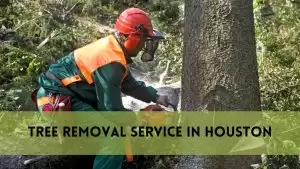Moss growth on trees is a common issue that can negatively impact their health and appearance. In this comprehensive guide, we'll delve into the various aspects to remove moss from trees and provide you with a step-by-step approach to removing it effectively.
Understanding Moss on Trees:
Moss, a non-vascular plant, thrives in damp and shaded environments, often found growing on tree trunks and branches. Factors such as excess moisture, lack of sunlight, and poor tree health contribute to its growth.
Assessing the Impact of Moss on Trees:
Moss may seem harmless, but it can have detrimental effects on tree health. Its dense coverage can hinder photosynthesis, leading to reduced growth and weakened branches. If left unchecked, moss can contribute to branch decay and increase the risk of tree diseases.
Precautions and Safety Measures:
Before diving into moss removal, prioritize safety. Don protective gear such as gloves, goggles, and sturdy footwear. Additionally, ensure compliance with local regulations and guidelines for tree maintenance.
Step-by-Step Guide to Remove Moss from Trees
Step 1: Tree Inspection
Begin by visually inspecting the tree for moss growth. Assess the severity and identify any underlying issues affecting the tree's overall health. Remember, prevention is key to long-term tree care.
Step 2: Cleaning Tools and Materials
Gather the necessary tools for moss removal. Opt for a soft brush, pruning shears, and a sturdy ladder, if needed. Additionally, consider using water, mild soap, or a biodegradable moss remover for effective cleaning.
Step 3: Gently Brushing Off Moss
Using a gentle touch, brush off the moss from the tree's surface. Treat the tree with care, avoiding any damage to the delicate bark or branches. Remember, patience is a virtue when dealing with moss removal.
Step 4: Pruning Infested Branches
For heavily infested branches, pruning becomes crucial. Trim them to prevent further moss growth and enhance the tree's overall health. Ensure to sterilize your pruning tools to prevent the spread of diseases.
Step 5: Treating the Tree and Preventing Future Moss Growth
Apply a moss remover or a mild soap-water solution to the affected areas. This will help eradicate any remaining moss and discourage its re-growth. Additionally, consider improving tree health, increasing sunlight exposure, and managing moisture levels to prevent future moss issues.
Aftercare and Maintenance:
Once you've successfully removed the moss, monitor the tree's condition regularly. Implement periodic cleaning to prevent moss from returning and maintain the tree's health and beauty. Remember, a well-maintained tree adds value to your surroundings.
Frequently Asked Questions
How do I get rid of moss on my trees?
What is a natural moss killer for trees?
What kills moss fast?
What is the best way to kill moss?
Conclusion:
Removing moss from trees is essential for their health and aesthetics. By following this comprehensive guide, you can effectively eliminate moss, promote tree growth, and preserve the natural beauty of your surroundings. Remember, a little effort goes a long way in ensuring the well-being of your beloved trees. So, let's get started on this moss removal journey today.




